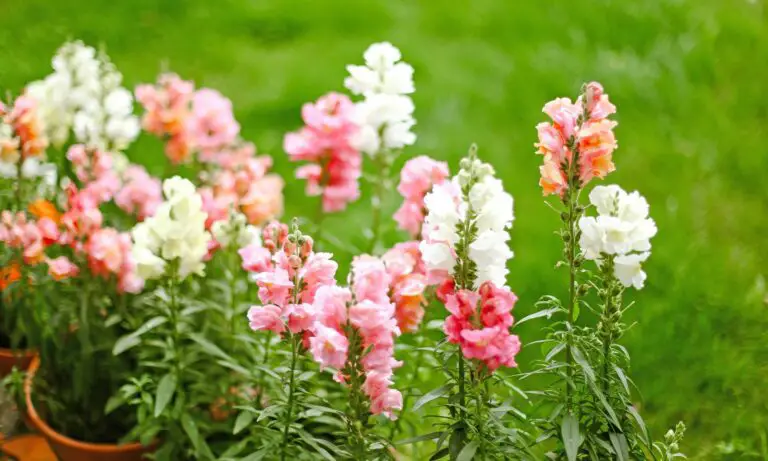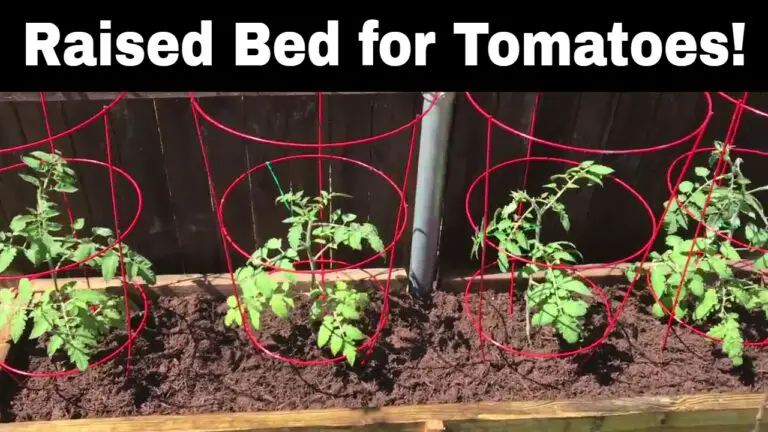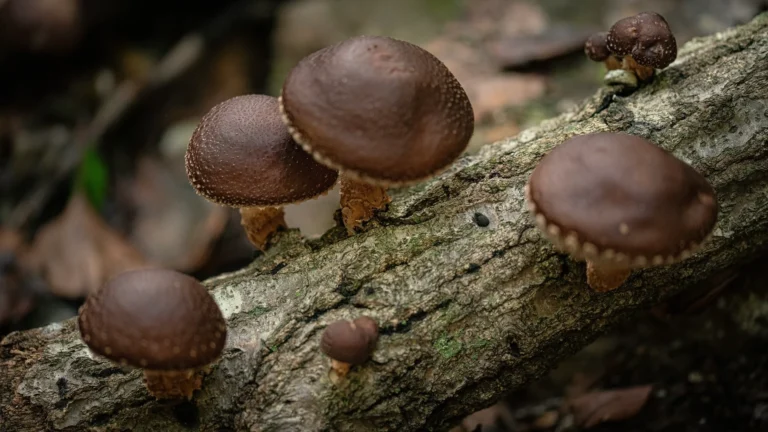Bokashi Composting: How Does It Work?
Table of Contents
What is Bokashi composting?
Bokashi composting is a fermentation process that utilizes beneficial microbes to break down organic matter, including kitchen scraps and food waste, into a rich soil conditioner. Unlike traditional composting methods that rely on decomposition through aerobic bacteria, Bokashi composting is an anaerobic process. This means that the beneficial microbes can thrive in an oxygen-deprived environment, speeding up the breakdown of organic material.
The key component in Bokashi composting is the Bokashi bran, a mixture of bran or sawdust infused with effective microorganisms (EM). When mixed with food waste in an airtight container, the Bokashi bran activates the fermentation process, eliminating odors and creating a nutrient-dense fertilizer. This method is particularly beneficial for urban dwellers or those with limited outdoor space, as it allows for odorless composting and can be done indoors.
The history of Bokashi composting
Bokashi composting, a traditional Japanese method of fermentation, has a rich history dating back to the early 1980s when it was popularized by Dr. Teruo Higa. Dr. Higa, a professor of horticulture at the University of the Ryukyus in Okinawa, developed the Bokashi technique as a way to improve soil health and organic waste management.
The term “Bokashi” itself translates to “fermented organic matter” in Japanese, emphasizing the core principle of this composting method. Over the years, Bokashi composting has gained recognition worldwide for its ability to break down organic waste rapidly through anaerobic fermentation, creating a nutrient-rich soil amendment that enhances plant growth. The simplicity and efficiency of the Bokashi process have made it a popular choice for environmentally conscious gardeners and farmers looking to minimize food waste and maximize soil fertility.
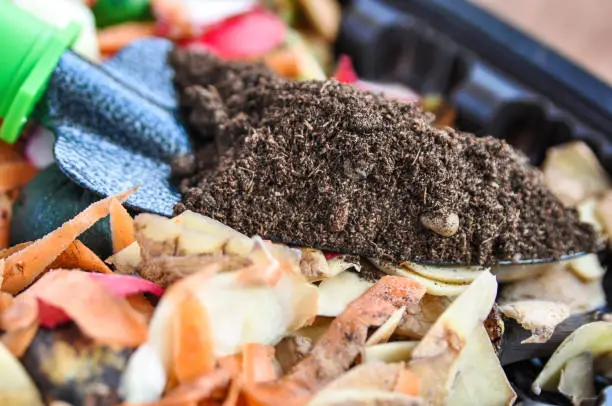
Benefits of using Bokashi composting
Bokashi composting offers a multitude of benefits for both the environment and garden enthusiasts. One of the key advantages of Bokashi composting is its ability to decompose food waste quickly and efficiently, allowing for the production of nutrient-rich soil amendment in just a few weeks. This rapid decomposition process not only reduces the amount of waste sent to landfills but also helps in reducing greenhouse gas emissions.
Moreover, Bokashi composting facilitates the breakdown of a wider range of organic materials compared to traditional composting methods. This means that not only can you compost common kitchen scraps like fruits and vegetables, but you can also compost meat, dairy, and even small bones. This versatility makes Bokashi composting a convenient and effective way to divert a larger variety of organic waste from ending up in landfills, contributing to a more sustainable and environmentally friendly approach to waste management.
| Use | Description |
|---|---|
| Pet Food | Mealworms are commonly used as a high-protein pet food for captive reptiles, fish, birds, and some small mammals. They are also provided to wild birds in bird feeders, especially during nesting seasons. |
| Fishing Bait | Anglers use mealworms as fishing bait due to their wriggling motion and attractiveness to fish. |
| Human Consumption | In some cultures, mealworms are edible. They are rich in protein and can be processed into food products such as flour. The European Union has approved them for human consumption. |
| Research and Study | Mealworms are used in biological research due to their ease of rearing, handling, and non-model organism status. They serve as proof-of-concept models in fields like basic biology, biochemistry, evolution, immunology, and physiology. |
The science behind Bokashi composting
Bokashi composting operates on the premise of anaerobic fermentation, a process that breaks down organic matter with the help of beneficial microorganisms. Unlike traditional composting, which relies on aerobic decomposition, Bokashi composting provides an oxygen-free environment conducive to the growth of lactobacillus bacteria. These bacteria play a vital role in the breakdown of kitchen scraps, including meat and dairy products, into a pre-compost material rich in nutrients.
The science behind Bokashi composting also involves the creation of a highly acidic environment during the fermentation process. The acidic conditions not only aid in the breakdown of organic matter but also prevent the growth of harmful pathogens and foul odors. This controlled fermentation process, combined with the exclusion of oxygen, results in a fast and efficient breakdown of kitchen waste, producing a nutrient-dense compost that can enhance soil health and plant growth.
Materials needed for Bokashi composting
When starting Bokashi composting at home, there are a few key materials you will need to ensure the success of your composting process. One essential item is a Bokashi bucket or bin. This airtight container is specifically designed for fermenting organic waste using Bokashi bran, a mixture of bran and effective microorganisms that kickstart the fermentation process. Additionally, you will require kitchen scraps such as vegetable peelings, coffee grounds, and eggshells, which are the primary materials that will be undergoing the fermentation process in the Bokashi bin.
Apart from the Bokashi bucket and organic kitchen waste, you will also need a tamper or spoon to compact the food scraps inside the bin, a measuring cup to sprinkle the Bokashi bran evenly over the waste, and a tight-fitting lid to seal the container during the fermentation period. These simple yet crucial materials are all you need to get started with Bokashi composting and turn your kitchen scraps into rich, nutrient-dense soil for your plants and garden.
A table summarizing the materials needed for Bokashi composting:
Table
| Material | Description |
|---|---|
| Bokashi Bucket | An air-tight container specifically designed for Bokashi composting. It collects the liquid fertilizer (bokashi tea) separately from the solid materials. |
| Bokashi Bran | A mixture of wheat bran, rice hulls, or sawdust combined with molasses and effective microorganisms (EM). The bran serves as food for the microbes. |
| Kitchen Scraps | Collect a variety of organic waste, including fruit and vegetable scraps, eggshells, tea, coffee grounds, meat, dairy, and even bones. |
| Garden Soil | A small bag of garden soil (not potting soil) to introduce beneficial microorganisms to the Bokashi system. |
| Compost | A small bag of compost to enhance the microbial diversity in the Bokashi compost. |
| Mixing Trowel | Use a mixing trowel to blend the Bokashi bran with the kitchen scraps. |
| Newspaper Sheets | Optional, but you can use a couple of newspaper sheets to cover the top layer of the Bokashi mixture. |
| Dry Builders Sand | Optional, but you can add a layer of dry builders sand to help absorb excess moisture. |
How to start Bokashi composting at home
To begin Bokashi composting at home, you will need a Bokashi bucket or bin, Bokashi bran, and organic food waste. First, place a layer of food waste into the Bokashi bucket and sprinkle a generous amount of Bokashi bran over it. Then, press down the waste to remove air pockets and repeat the layering process until the bucket is full. Once the bucket is full, seal it tightly with the lid to create an anaerobic environment for fermentation. Remember to drain any excess liquid that may accumulate in the bin to prevent odors.
After the Bokashi bucket is full, let it ferment for about two weeks. During this time, ensure the lid is sealed to maintain the anaerobic conditions necessary for the fermentation process. Once the two weeks are up, the compost is ready to be buried in the soil or added to a traditional compost bin to finish decomposing. The resulting Bokashi compost will enrich your soil with beneficial microbes and nutrients, making it an excellent fertilizer for your garden.
Tips for successful Bokashi composting
For successful Bokashi composting, it’s crucial to ensure that the food scraps are chopped into smaller pieces to accelerate the fermentation process. This allows the beneficial microbes in the Bokashi bran to work more efficiently in breaking down the organic matter. Additionally, layering the food waste with the Bokashi bran evenly and compactly in the bin helps create an anaerobic environment necessary for fermentation.
Another essential tip is to press out excess air from the bin after adding each layer of food waste to prevent oxygen from interfering with the fermentation process. Keeping the lid tightly closed between uses also helps maintain the anaerobic conditions needed for successful Bokashi composting. Remember to drain any excess liquid, known as Bokashi tea, regularly to prevent odor and mold growth.
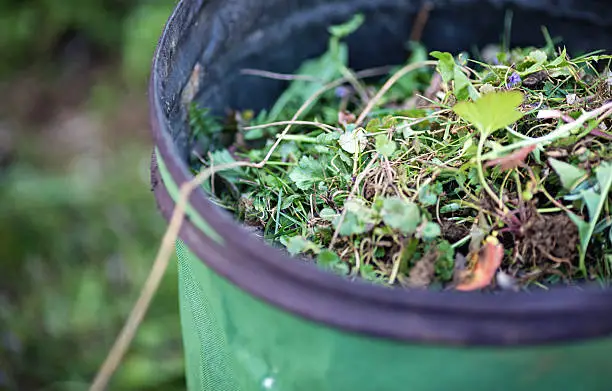
Common misconceptions about Bokashi composting
One common misconception about Bokashi composting is that it produces an unpleasant odor. In reality, Bokashi composting utilizes a fermentation process that reduces foul smells typically associated with traditional composting methods. The anaerobic fermentation of kitchen scraps in an airtight container actually creates a slightly sweet, pickled smell, similar to that of fermented foods.
Another misconception is that Bokashi composting is difficult and time-consuming. On the contrary, Bokashi composting is a simple and convenient process that can easily be incorporated into daily routines. With minimal effort and maintenance required, anyone can successfully manage a Bokashi composting system, making it an efficient and effective way to reduce food waste and nourish the soil in a sustainable manner.
Difference between Bokashi composting and traditional composting
Bokashi composting and traditional composting are two popular methods of organic waste recycling, each with its unique approach and benefits. While traditional composting relies on aerobic decomposition, Bokashi composting is an anaerobic process that utilizes a specific mix of beneficial microorganisms to ferment organic matter. This results in a faster breakdown of waste and the preservation of nutrients that might otherwise be lost in traditional composting methods.
Another key difference between the two methods is the types of materials they can process. Traditional composting is suitable for a wide range of organic waste, including fruit and vegetable scraps, yard trimmings, and some paper products. On the other hand, Bokashi composting can handle a broader spectrum of materials, such as meat, dairy, and even small amounts of cooked foods that may not decompose well in traditional compost piles. This makes Bokashi composting a versatile option for those looking to reduce food waste and create nutrient-rich soil amendments.
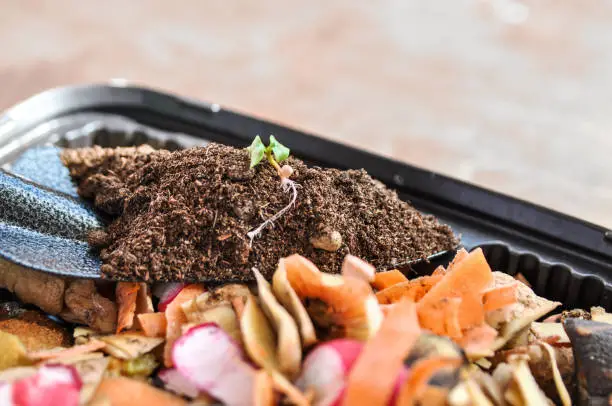
How long does it take for Bokashi composting to complete?
Bokashi composting is a relatively quick process compared to traditional composting methods. The duration for Bokashi composting to complete varies depending on factors such as temperature, moisture levels, and the type of organic waste being fermented. Generally, the anaerobic fermentation stage in Bokashi composting takes about 2-4 weeks to fully break down the organic material. Once this stage is finished, the fermented waste can be buried in the soil or added to a traditional compost pile for further decomposition.
During the fermentation process, beneficial microbes work to break down the organic matter rapidly, transforming it into a nutrient-rich soil amendment. The accelerated breakdown in Bokashi composting helps to lock in nutrients and minimize odors. While traditional composting can take months to a year to fully mature, Bokashi composting offers a quicker turnaround time, allowing gardeners to utilize the nutrient-dense end product in a shorter period.
Can you compost meat and dairy with Bokashi composting?
Composting meat and dairy products with Bokashi composting is a controversial topic in the gardening community. Bokashi composting relies on anaerobic fermentation to break down organic matter, including kitchen scraps. While some sources suggest that meat and dairy can be composted using the Bokashi method due to the fermentation process that can handle a wider range of materials, others caution against it. The concern is that these items may not break down completely during the fermentation process and could attract pests or produce unpleasant odors in the compost pile.
However, if you choose to experiment with composting meat and dairy using Bokashi composting, it is essential to do so with caution and in a controlled environment. Some experienced gardeners recommend using smaller quantities of these items in separate Bokashi bins to monitor the process closely. Ensuring that the fermentation process is thorough and that the compost is completely cured before adding it to the garden is crucial to avoid any potential issues with the final product.
Troubleshooting common issues with Bokashi composting
When encountering issues in your Bokashi composting process, it’s essential to address them promptly to ensure the success of your composting endeavors. One common problem that may arise is a foul smell emanating from the Bokashi bucket. This could indicate excess moisture in the bin or the improper sealing of the lid. To remedy this, ensure the lid is tightly closed, drain any excess liquid from the bucket, and add more Bokashi bran to help absorb the moisture.
Another issue that gardeners may face is mold growth on the surface of the Bokashi bucket’s contents. While some white mold growth is normal in the fermentation process, an excess of mold may indicate a lack of oxygen reaching the bin. To mitigate this problem, try mixing the contents of the bucket more thoroughly, adding more Bokashi bran to improve aeration, and ensuring the lid is adequately sealed to maintain the anaerobic conditions necessary for proper fermentation. By addressing these common issues promptly and effectively, you can optimize the Bokashi composting process and produce nutrient-rich compost for your garden.
How to use Bokashi compost in your garden
To use Bokashi compost in your garden, simply dig a hole around 6 to 8 inches deep in your soil. Spread the Bokashi compost evenly at the bottom of the hole, ensuring that it is in direct contact with the soil. Cover the compost with a layer of soil before planting your seeds or seedlings. The beneficial microorganisms present in the Bokashi compost will enrich the soil, helping your plants thrive.
When using Bokashi compost in your garden, it’s essential to avoid direct contact between the compost and the roots of your plants. To prevent any potential burning effect on the roots, make sure to create a buffer layer of soil between the Bokashi compost and the root system of your plants. By incorporating Bokashi compost into your gardening routine, you can enhance the fertility of your soil and promote healthier plant growth.
Environmental impact of Bokashi composting
Bokashi composting offers numerous environmental benefits that make it a sustainable waste management option. By fermenting organic waste, Bokashi composting helps reduce the amount of methane gas produced in landfills, which is a potent greenhouse gas contributing to climate change. Additionally, the end product of Bokashi composting is a nutrient-rich soil amendment that enhances soil fertility, reduces the need for chemical fertilizers, and promotes healthier plant growth.
Moreover, Bokashi composting can also help conserve water resources by improving soil structure and water retention capacity, thereby reducing the need for frequent irrigation. This method of composting helps divert organic waste from landfills, decreasing the overall burden on municipal waste management systems and promoting a more circular approach to waste management. The environmental impact of Bokashi composting extends beyond just waste reduction, offering a holistic solution that benefits both the environment and agricultural practices.
Success stories of individuals using Bokashi composting
Success stories of individuals using Bokashi composting are abundant and inspiring. One individual, Sarah, from Texas, shared her experience of how Bokashi composting transformed her small urban garden. She noted how the nutrient-rich soil produced from the Bokashi compost helped her plants thrive, leading to a bountiful harvest of vibrant vegetables and herbs. Sarah emphasized the convenience of Bokashi composting, highlighting how easy it was to incorporate into her gardening routine.
Another success story comes from John, a passionate environmentalist from California. John described how Bokashi composting significantly reduced his household waste, diverting food scraps from landfills and minimizing his carbon footprint. He shared how the fermented food waste from the Bokashi bin enriched his garden soil, leading to healthier plants without the need for synthetic fertilizers. John’s success with Bokashi composting not only benefited his garden but also aligned with his commitment to sustainable living.
Future trends in Bokashi composting technology
Future trends in Bokashi composting technology are focused on enhancing the efficiency and convenience of this sustainable practice. One exciting development is the integration of smart sensors and monitoring systems into Bokashi composting bins. These devices can track temperature, moisture levels, and pH balance, providing real-time data to optimize the composting process. Additionally, researchers are exploring the use of microbial inoculants to further accelerate the breakdown of organic matter in Bokashi composting, leading to faster and more effective compost production. By harnessing technology and scientific advancements, Bokashi composting is set to become even more user-friendly and impactful in the realm of organic waste management.
In the realm of Bokashi composting technology, advancements in odor control methods are also on the horizon. Innovations such as specialized filters and airflow systems aim to minimize unpleasant odors often associated with traditional composting processes. This is a significant development as it can make Bokashi composting more appealing to urban dwellers or those with limited outdoor space. As sustainability practices continue to gain momentum worldwide, the evolution of Bokashi composting technology plays a vital role in promoting eco-conscious waste management solutions for a greener future.
FAQ’s
Can Bokashi composting be done indoors?
Yes, Bokashi composting can be done indoors as it is an anaerobic process that does not produce odors. It is a great option for those who do not have access to outdoor space for traditional composting.
Are there any special containers needed for Bokashi composting?
Yes, specialized Bokashi composting bins are available that are airtight and have a spigot for draining liquid. These bins are designed to create the ideal environment for the fermentation process.
Is Bokashi composting suitable for all types of food waste?
Yes, Bokashi composting can handle all types of food waste, including meat and dairy products. The fermentation process breaks down these materials effectively.
Can Bokashi compost be used immediately in the garden?
Bokashi compost needs to be buried in soil for a period of 2-4 weeks to complete the fermentation process before it can be used in the garden. This allows the compost to further break down and enrich the soil.
How often should the Bokashi compost bin be emptied?
The Bokashi compost bin should be emptied every 1-2 weeks, depending on the amount of food waste being added. The fermented waste can then be buried in soil to continue the composting process.
Are there any environmental benefits to using Bokashi composting?
Yes, Bokashi composting helps reduce greenhouse gas emissions by diverting food waste from landfills. It also enriches the soil with beneficial microorganisms, improving soil health and fertility.
What are the future trends in Bokashi composting technology?
Future trends in Bokashi composting technology include the development of more efficient and user-friendly Bokashi composting bins, advancements in the fermentation process to further accelerate composting time, and the integration of technology for monitoring and optimizing the composting process.


